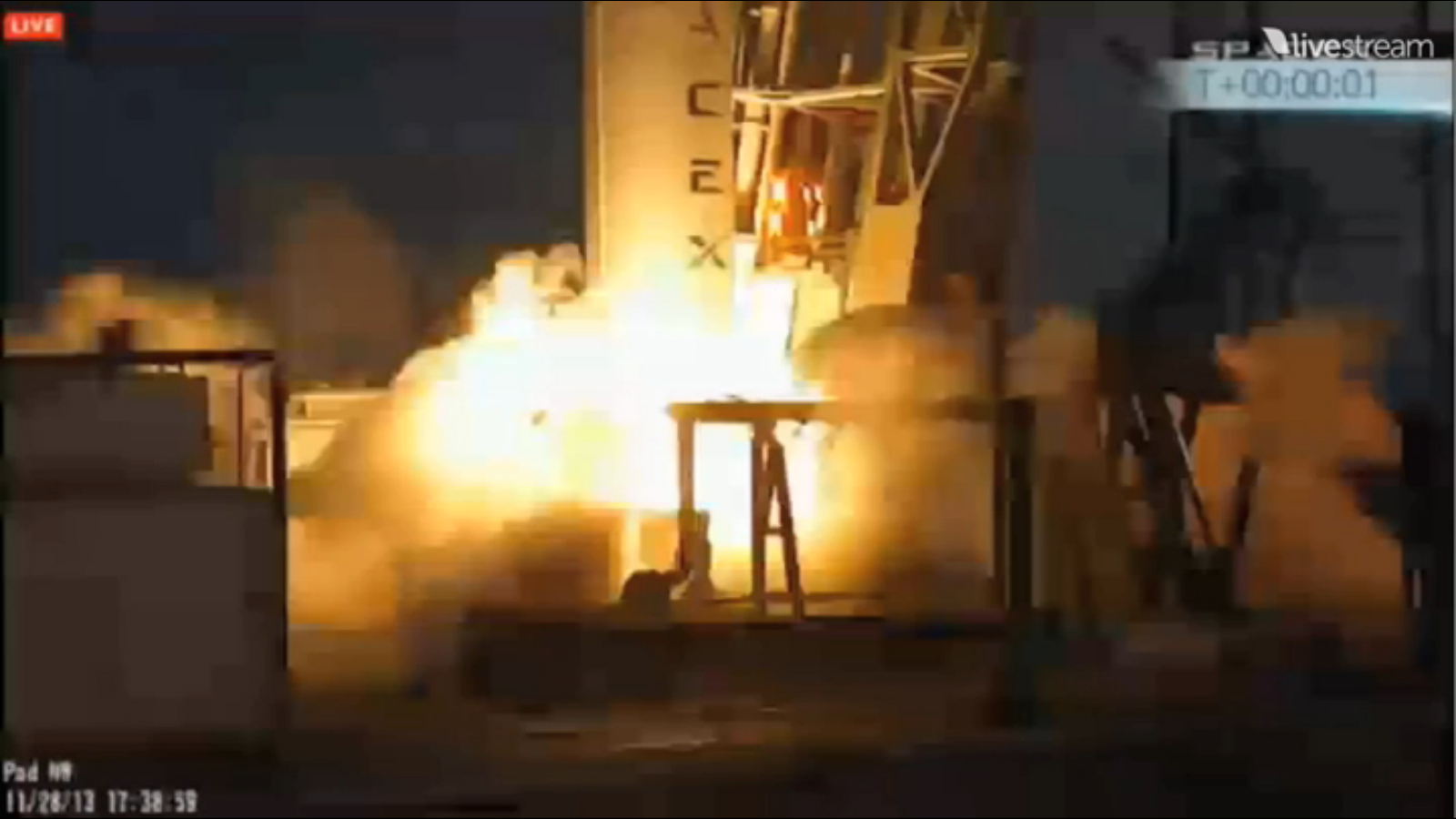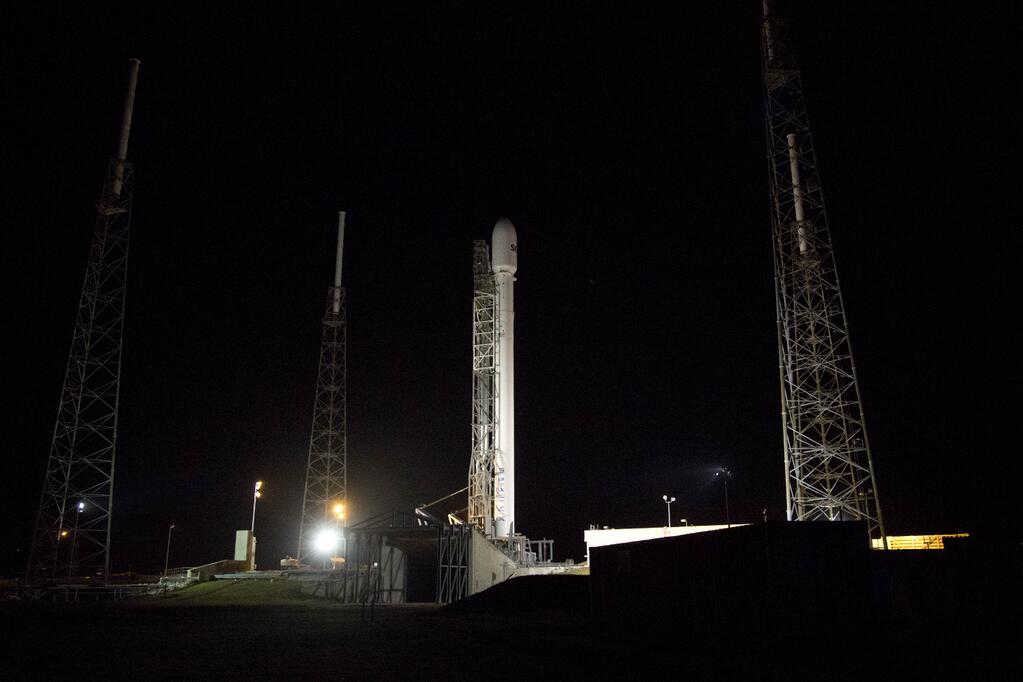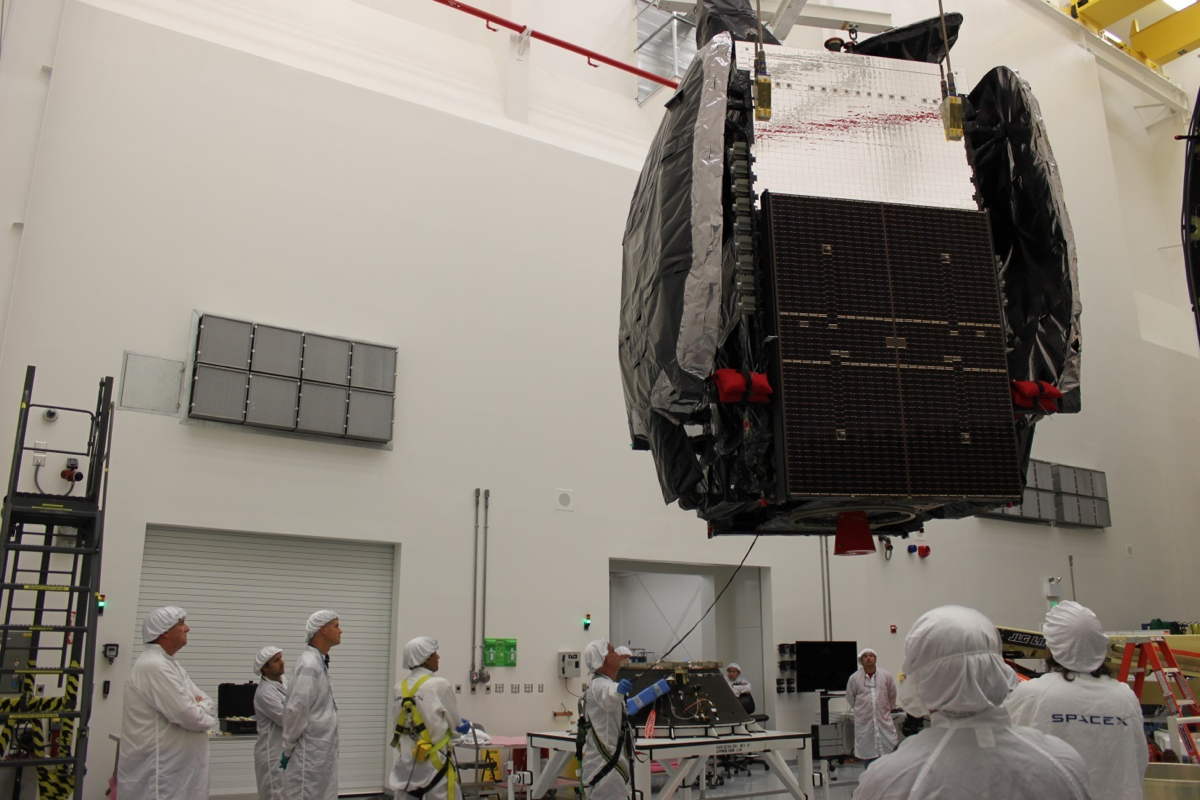SpaceX Aborts Thanksgiving Rocket Launch Due to Engine Trouble
Topped with a television broadcasting satellite, SpaceX's Falcon 9 rocket fired its engines and was moments away from liftoff from Cape Canaveral on Thursday, but the commercial booster aborted the launch after computers detected the engines were too slow building up thrust.
Engineers raced to understand and resolve the problem, but they could not get comfortable enough to attempt the launch again before Thursday's time-constrained flight opportunity closed.
Officials had not announced a new target launch date Thursday evening, but SpaceX chief executive Elon Musk posted on his Twitter account the mission would likely be delayed a few days. [See photos of SpaceX's milestone Falcon 9 rocket mission]
SpaceX was targeting liftoff of the 22-story rocket at 5:39 p.m. EST (2239 GMT) Thursday, aiming to achieve the first Thanksgiving Day launch from Florida's Space Coast since 1959. The launch was pushed back to Thursday after multiple technical problems thwarted an initial launch attempt Monday.
The rocket's mission is to place the SES 8 television broadcasting satellite into orbit more than 50,000 miles above Earth, the highest altitude ever achieved by a SpaceX launch.
Musk and industry officials say the flight is critical to SpaceX's future in the commercial launch market, in which it competes against stalwart launch vehicles from Europe and Russia to haul large telecommunications satellites into orbit.
The countdown marched smoothly toward liftoff Thursday, with the rocket clearing key hurdles that hamstrung Monday's launch attempt. The Falcon 9 pressurized its propellant tanks, switched to internal power and ignited its nine Merlin 1D first stage engines a few seconds before the appointed launch time.
But the Falcon 9's computer-controlled countdown sequencer recognized a problem and called off the launch, shutting down the engines after they flashed to life and sent a wave of sound across the Florida rocket base.
Breaking space news, the latest updates on rocket launches, skywatching events and more!
Moments later, as SpaceX's webcast went silent, Elon Musk went to Twitter to describe the status of the launch.
The launch was "aborted by autosequence due to slower than expected thrust ramp," Musk posted on Twitter.
The technology mogul, who founded SpaceX in 2002, later posted the launch team was relaxing conservative preset limits on the rocket by increasing the pressure of the engines' helium spin start system.
As engineers continued to study the problem, SpaceX elected to restart the countdown to preserve a chance to launch Thursday.
Ultimately, however, SpaceX said they could not get comfortable with the issue in time and ordered another hold with less than a minute left in the day's second countdown.
"We called manual abort," Musk tweeted. "Better to be paranoid and wrong. Bringing rocket down to borescope (inspect) engines."
With time running out in the launch window, the launch director called off the flight for Thursday.
"We have scrubbed for the day," the launch director announced. "We'll continue through the abort safing and go into detank and site securing.
"Essentially, we just ran out of time to complete [the] data review from the first engine start. So taking the safe path out of here, we decided to abort for the day and do [a] sufficient, complete data review."
Spaceflight Now is also providing updates on SpaceX's mission via its Mission Status Center.
Follow Stephen Clark on Twitter: @StephenClark1. Copyright 2013 SpaceflightNow.com, all rights reserved.
Stephen Clark is the Editor of Spaceflight Now, a web-based publication dedicated to covering rocket launches, human spaceflight and exploration. He joined the Spaceflight Now team in 2009 and previously wrote as a senior reporter with the Daily Texan. You can follow Stephen's latest project at SpaceflightNow.com and on Twitter.





